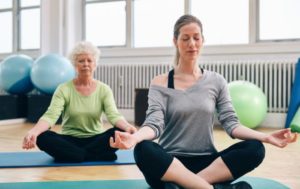 Lead author Richard L. Nahin, Ph.D., of the National Center for Complementary and Integrative Health (NCCIH) at the National Institutes of Health (NIH), and colleagues publish their findings in the journal Mayo Clinic Proceedings.
Lead author Richard L. Nahin, Ph.D., of the National Center for Complementary and Integrative Health (NCCIH) at the National Institutes of Health (NIH), and colleagues publish their findings in the journal Mayo Clinic Proceedings.
In any given year, around 100 million adults in the United States experience chronic pain – pain that persists for at least 12 weeks – of whom around 40 million have severe chronic pain.
While there are medications available to help ease chronic pain – such as nonsteroidal anti-inflammatory drugs (NSAIDs) – they are not always effective.
“For many Americans who suffer from chronic pain, medications may not completely relieve pain and can produce unwanted side effects,” notes Nahin. “As a result, many people may turn to nondrug approaches to help manage their pain.”
The NCCIH note that American adults spend around $30 billion each year on complementary health approaches – such as yoga and acupuncture – and the most common reason is to help ease pain.
However, the research team says that to date, there has been a lack of robust evidence to suggest such approaches are effective for pain management.
“Our goal for this study was to provide relevant, high-quality information for primary care providers and for patients who suffer from chronic pain,” says Nahin.
Back pain could be eased with yoga, acupuncture
By analyzing the MEDLINE database, Nahin and team identified 150 randomized, controlled U.S. clinical trials conducted over the past 50 years that looked at the effects of nondrug approaches on chronic pain.
Specifically, the researchers assessed the safety and efficacy of complementary health approaches for the treatment of five of the most common pain conditions: back pain, osteoarthritis, neck pain, fibromyalgia, and severe headaches and migraine.
Fast facts about yoga
Around 21 million adults in the U.S. practice yoga
Yoga is practiced by 1.7 million children in the U.S.
Back pain is the main reason why people practice yoga
Learn more about yoga
A treatment was considered effective if it led to improvements in pain severity and pain-related disability and/or function that were statistically significant, when compared with a control group.
The researchers found there was strong evidence to suggest that yoga and acupuncture are safe and effective for back pain, while acupuncture and tai chi might benefit people with pain caused by osteoarthritis of the knee.
Results also suggested that massage therapy is safe and effective – particularly if administered in 1-hour sessions two to three times weekly – for short-term alleviation of neck pain.
Furthermore, there was evidence to suggest relaxation techniques – such as stress management and relaxation training – are safe and effective for the treatment of severe headaches and migraine.
There was some evidence to suggest that people with back pain might benefit from spinal manipulation, massage therapy, and osteopathic manipulation, while tai chi and relaxation approaches might benefit patients with fibromyalgia. However, these associations were not as strong.
The researchers say their findings indicate that some of the most popular complementary health approaches may be effective tools for managing common pain conditions.
MNT DT






